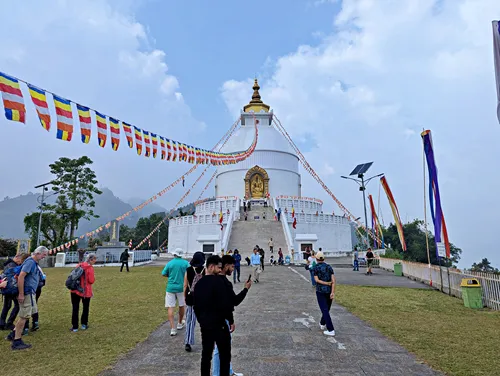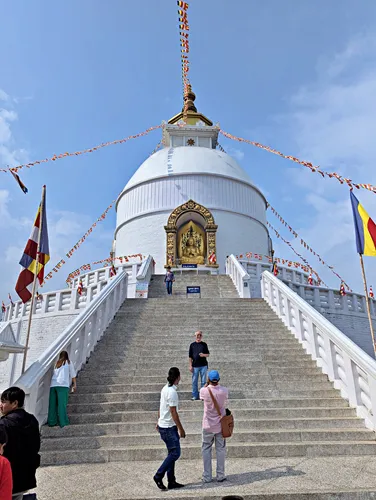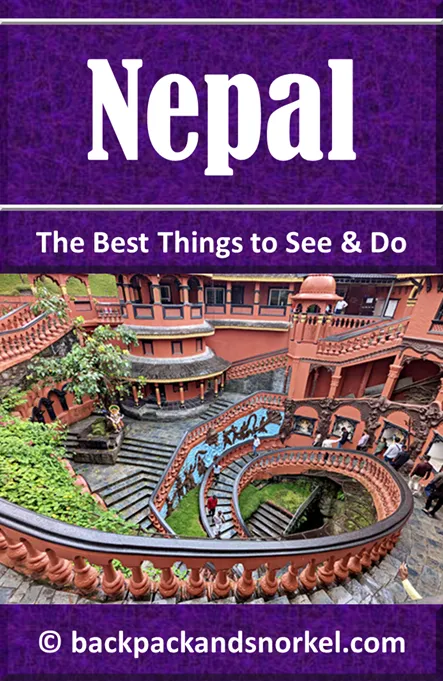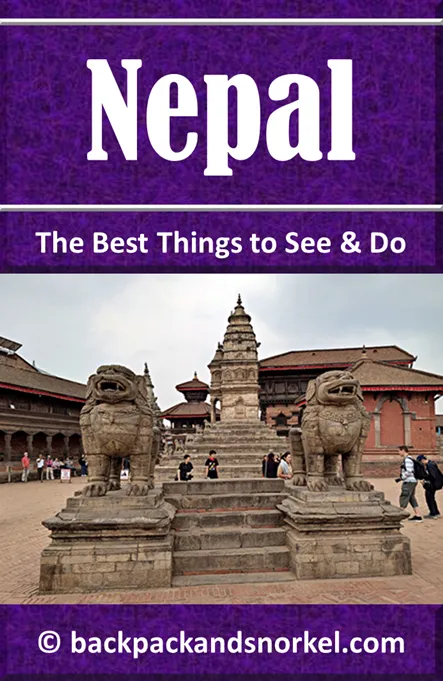World Peace Pagoda: Your Guide to Pokhara's Spiritual Hilltop - Nepal Purple Travel Guide
(map, reviews)
This is Premium Content! To access it, please download our
Backpack and Snorkel Purple Travel GuidePerched high on Anadu Hill overlooking the serene waters of Phewa Lake, the World Peace Pagoda (also called Shanti Stupa) is one of the most iconic landmarks in Pokhara, Nepal. The stupa offers panoramic views of the Pokhara Valley, and on a clear day, the Annapurna range.
The pagoda is located at an elevation of 3,600 ft (1100 m).
From the pagoda, if you look up the hills to the west, you can see the Shiva statue of the Pumdikot Religious Area.
The easiest way to reach World Peace Pagoda is by car, but as mentioned earlier, it is possible to cross Phewa Lake by boat and then take a steep 1h hike up to the site.




Origin of the Name World Peace Pagoda
The term ‘World Peace Pagoda’ is a translation of Shanti Stupa, where Shanti means peace in Sanskrit.
A Symbol of Peace
Construction of the Pokhara World Peace Pagoda began in 1973 under the guidance of Nichidatsu Fujii, a Buddhist monk and founder of the Nipponzan-Myōhōji order. After many delays, it was finally completed and consecrated in 1999. The pagoda's striking white structure, set against the backdrop of the Himalayas and the valley below, creates an awe-inspiring sight.
The Pokhara stupa is part of this international movement and stands as a symbol of non-violence and harmony. Nepal has two of the approximately eighty peace pagodas in the world: Shanti Stupa in Lumbini, the birthplace of the Buddha and Shanti Stupa in Pokhara.
Shanti Stupa in Pokhara was the first World Peace Pagoda in Nepal, and seventy-first pagoda built by Nipponzan-Myōhōji in the world.
The first World Peace Pagoda was inaugurated in 1954 at Kumamoto in Japan, and new ones are still being built. World Peace Pagodas serve as symbols of peace and often offer beautiful views of their surroundings.
Admission
Admission is free, but you need to walk up some stairs to get to the plaza where the pagoda is located. The pagoda sits on a raised platform on the plaza. To take the stairs up from the plaza to the pagoda, one has to remove their shoes, the same as with other temples and shrines.
Back to your self-guided tour
Author: Rudy at Backpack and Snorkel
Bio: Owner of Backpack and Snorkel Travel Guides. We create in-depth guides to help you plan unforgettable vacations around the world.
Other popular Purple Travel Guides you may be interested in:
Like this Backpack and Snorkel Purple Travel Guide? Pin these for later:





